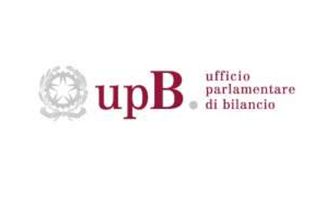(Finance) – “The budget maneuver is part of the ambitious path of consolidating public finances in the medium term outlined in the Structural Budget Plan and introduces various elements of strategic planning. However, it appears only partially included in an overall vision of economic policy. Numerous interventions do not follow an organic reform plan and do not appear to adequately support the growth potential in line with the reforms and investments on which the request to extend the budget adjustment period to seven years is based”. Thus the President of the Parliamentary Budget Office, Lilia Cavallari, at the hearing on the 2025 budget maneuver before the joint Budget Committees of the House and Senate.
The impact of the maneuver “it is consistent with the programmatic objectives of progressive reduction of the deficit/GDP ratio established in the PSB 2025-29 and in the DPB 2025 (from 3.8 percent in 2024, to 3.3 in 2025, to 2.8 in 2026 and to 2.6 in the following year) which provide for the reduction of the deficit at below 3 percent of GDP by 2026. On the lending side, the gross maneuver is equal to 35.3 billion in 2025, 40.2 in 2026 and 49.4 in 2027. The coverage resources are almost stable and will amount to 24.9 billion in 2025, 24.7 in 2026 and 23.1 in 2027″.
The main beneficiaries of the maneuver “are families, with a net value of 55 billion in the three-year period (15.2 billion in 2025, 19.4 in 2026 and 20.4 in 2027), especially for the interventions favor of employees. Also having a positive impact on the family sector are the refinancing of the National Health Service and the measures implemented in the social, pension and parenting sectors. On the other hand, the measures aimed at businesses and self-employed workers improve the balance in the two-year period 2025-26 compared to the scenario with current legislation (by 6.4 billion on average in each year), as a result of interventions on both revenues and expenses” .
In the three-year period 2025-27, “the revenues affecting labor are significantly reduced, mainly due to the stabilization of the benefits resulting from the reduction of the tax wedge, while those on consumption increase, above all due to the feedback effects of the maneuver on indirect taxes”.
The PBO also highlights the international context in which the 2025 budget fits “It is fragile and uncertainespecially due to geopolitical tensions and ongoing wars, with already tangible impacts on international trade, the prospects of which may be affected by new duties, and on the prices of raw materials. The international economy is fragmented and the actions of governments and central banks are becoming more uncertain, particularly in Europe, where Germany’s weak business situation weighs heavily.”
Italy “slows down, sees the long wave of the “post-pandemic rebound” of the three-year period 2021-2023 end and growth returns in line with previous values. In the third quarter, Italian GDP stagnates; PBO’s short-term models see a moderate recovery in the last three months of the year.”
Last month, during the hearing on the Structural Budget Plan 2025-29 (PSB), the PBO validated the macroeconomic forecasts of the Draft Budgetary Plan (DPB) as they were deemed acceptable, but exposed to various downside risks. In the DBP, GDP growth strengthens next year to 1.2 percent (from 1.0 in 2024), while it slows to 1.1 in 2026 and 0.8 percent in 2027. The most recent quarterly national accounts data have worsened expectations for 2024 by at least a couple of tenths of a percentage point but, net of this revision, “official forecasts are close to the range of the most recent estimates from other external forecasters”.
